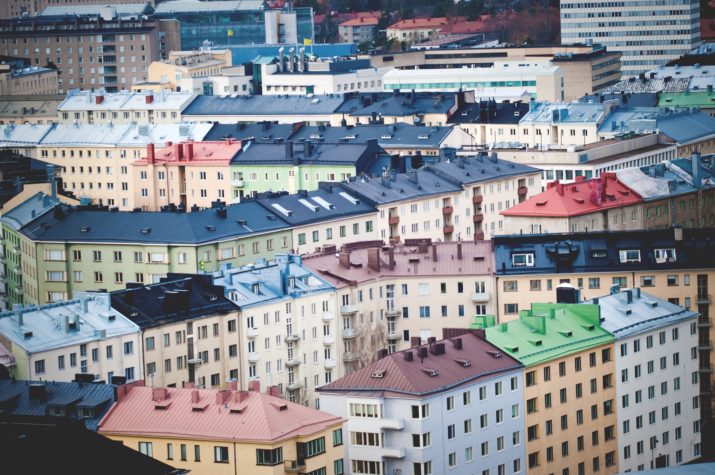
Young Finnish professionals are attracted to major European capitals. They move to Stockholm, Berlin and Amsterdam, as well as farther away. The sun shines in Dubai; the world’s top organisations and institutes are in New York and Washington. The occupations of these migrants are manifold: bankers, graphic designers, computer engineers, photographers and researchers, to name only a few.
They leave Finland because of poor employment opportunities and future prospects. This has been happening for a long time. Finns were moving to North America 100 years ago and to Sweden after World War II – in both cases because growing economies needed factory workers.
The difference with today’s migrants is that they are better educated and leaving a welfare state that ranks as one of the best places to live in the world according to most indices. The likelihood of them returning has nevertheless fallen sharply. Why?
I conducted a survey of Finns living abroad aged 20 to 40 along with the Helsinki-based journalist Johannes Niemeläinen. Of 799 survey respondents, only 19% saw returning as a likely option. This was down more than 20 percentage points on a 2006 survey, which had also included retirees who had settled abroad. When we compared only 20 to 40-year-olds, the decline was even sharper.
This comes at a time when working-age emigration from Finland has steadily increased. The net loss of about 2,000 citizens in 2015 was almost four times that of 2009, and over half were university educated. Interestingly, the majority of leavers were women. Put together, we are talking about a case of brain drain that could have severe consequences.
The broken circle
A recent study of international perceptions of Finns working abroad found them to be highly adaptable, linguistically talented and sought after. The Finnish welfare state clearly provides its citizens with the skills and education to make it in the world.
The government’s logic has long been that a well-trained, healthy workforce will return the favour later in life. Emigrants are supposed to come home with broader minds and international experience and contacts, to the benefit of the economy as a whole. All countries become embedded in the global economy one citizen at a time, goes the thinking.
But why would they go back? The cracks in Finland’s supposed virtuous circle are all too apparent. The country attracts fewer immigrants from elsewhere in the EU than its Scandinavian peers. Even Helsinki does not keep up with the competition, with the number of highly educated 30 to 34-year-olds in decline. In other northerly capitals such as Copenhagen, Stockholm and London, the opposite is the case.
Finland’s problem is not directly comparable to the mass migrations of workers in the past, driven by vast demographic, political and economic upheaval from the likes of the world wars. It is also not the same as the ongoing worldwide migration that we see from poorer to better off countries – which sadly now includes the likes of Spain and Greece.
Instead, it speaks to larger structural changes in the postwar welfare state. Everything from retiring baby boomers to the rising cost of healthcare to the economic crisis have forced the Finnish state to cut back. The damage to the economy and the education system has encouraged young people to move abroad.
Several high-profile academics have left Finland in protest at the circa €500m (£439m) cuts to higher education. Echoing this, we found that the likelihood of emigrants returning is down most sharply among PhD holders – a decrease of 36 percentage points since 2006. These academics tended to point to a direct correlation between cuts to education and their attitude to working in Finland. With other sectors, we found the same kind of attitudes.
This illustrates that in the end, the question of returning home boils down to employment. And as Finland celebrates 100 years of independence, most respondents felt that the experience they have acquired abroad won’t translate into better employment back home.
The greater threat
Small welfare states like Finland are more dependent on their educated workforce than more market-driven countries. If they don’t educate enough new people or recruit them from elsewhere, it will create structural problems for the welfare economy such as the loss of foreign investment.
And in a system that is heavily funded by the central government, cutbacks affect everyone much more than in a country where government spending is more concentrated on the poorest. This increases the chances of the most talented people leaving, which in turn risks undermining the country’s networks of knowledge and productive social relationships – often described as social capital. This forms the foundation of the whole welfare regime and acts as a buffer against external shocks, so there is a risk of system-wide effects.+
Coupled with further pressure on the welfare state from the ageing population, these developments have the potential to spiral irreversibly. We can liken this to oil leaking from an engine: it does not affect the machinery immediately, but over time it could damage it beyond repair.
What then is the solution? In 16 follow-up interviews, we found our young professional respondents remained tremendously proud of the Finnish welfare regime and worried about it. They might have been drawn overseas, but they still very much believed in the system from which they had come.
This points to the possibility of new forms of solidarity and welfarism that might yet somehow benefit countries like Finland. Tapping into this requires thinking beyond the nation state, create new transnational welfare regimes either by reaching out to emigrants or by cooperating with similar countries. This would of course be a radical shift. It may be necessary to prevent this brain drain problem from turning into a full-blown catastrophe.
Juho Korhonen is a PhD candidate at Brown University. His research focuses on historical transformations of political entities from empire to nation-state, socialism to post-socialism, and from welfare to post-welfare states.
This article is part of a series on sustainability and transformation in today’s Europe, published in collaboration with The Conversation and the Council for European Studies (CES) at Columbia University. Each article is based on a paper to be presented at the 24th International Conference of Europeanists in Glasgow from July 12-14 2017.
Photo: Aerial panorama of Helsinki, Finland, Evgeny Pasechnikov | Shutterstock
Published on June 26, 2017.




